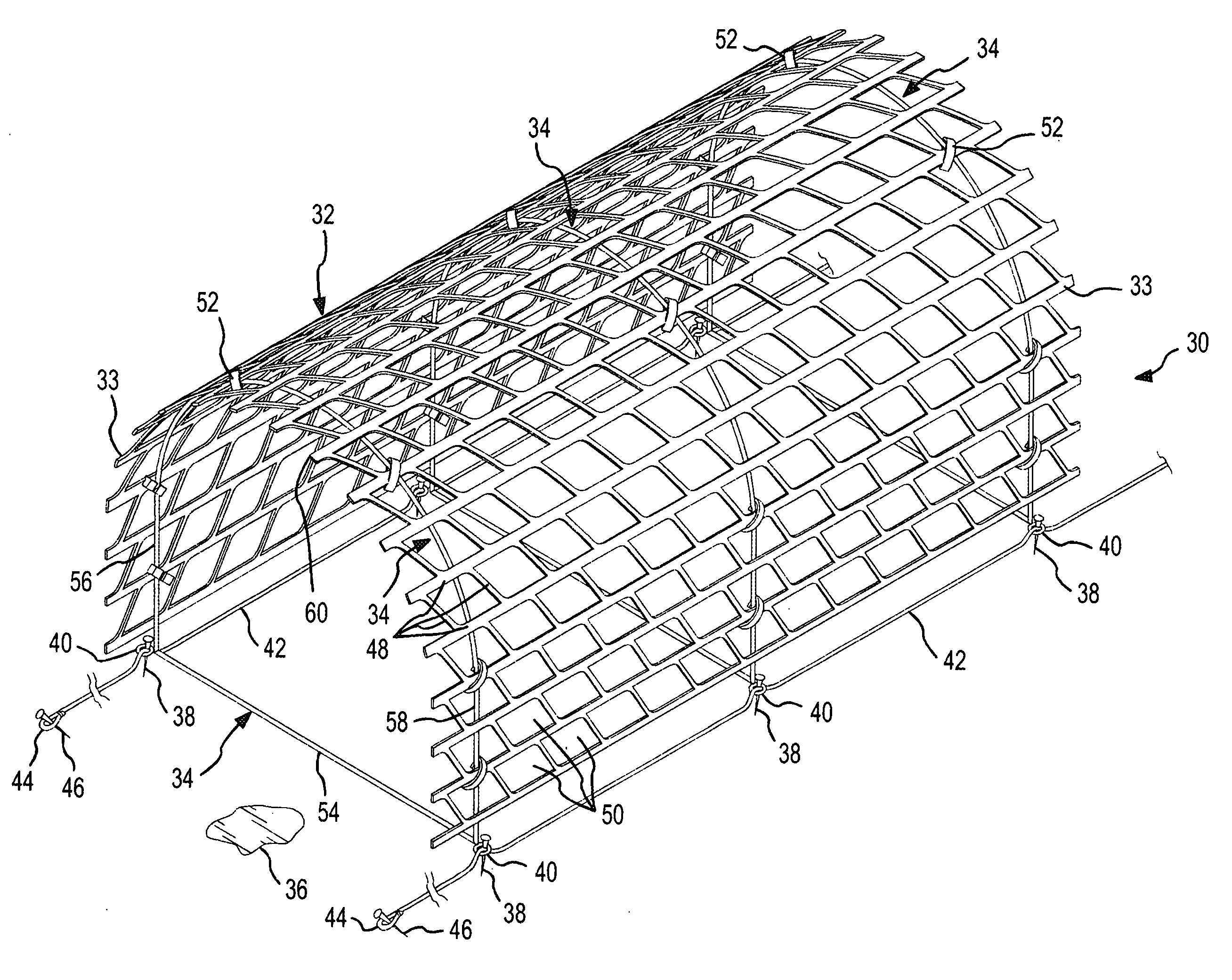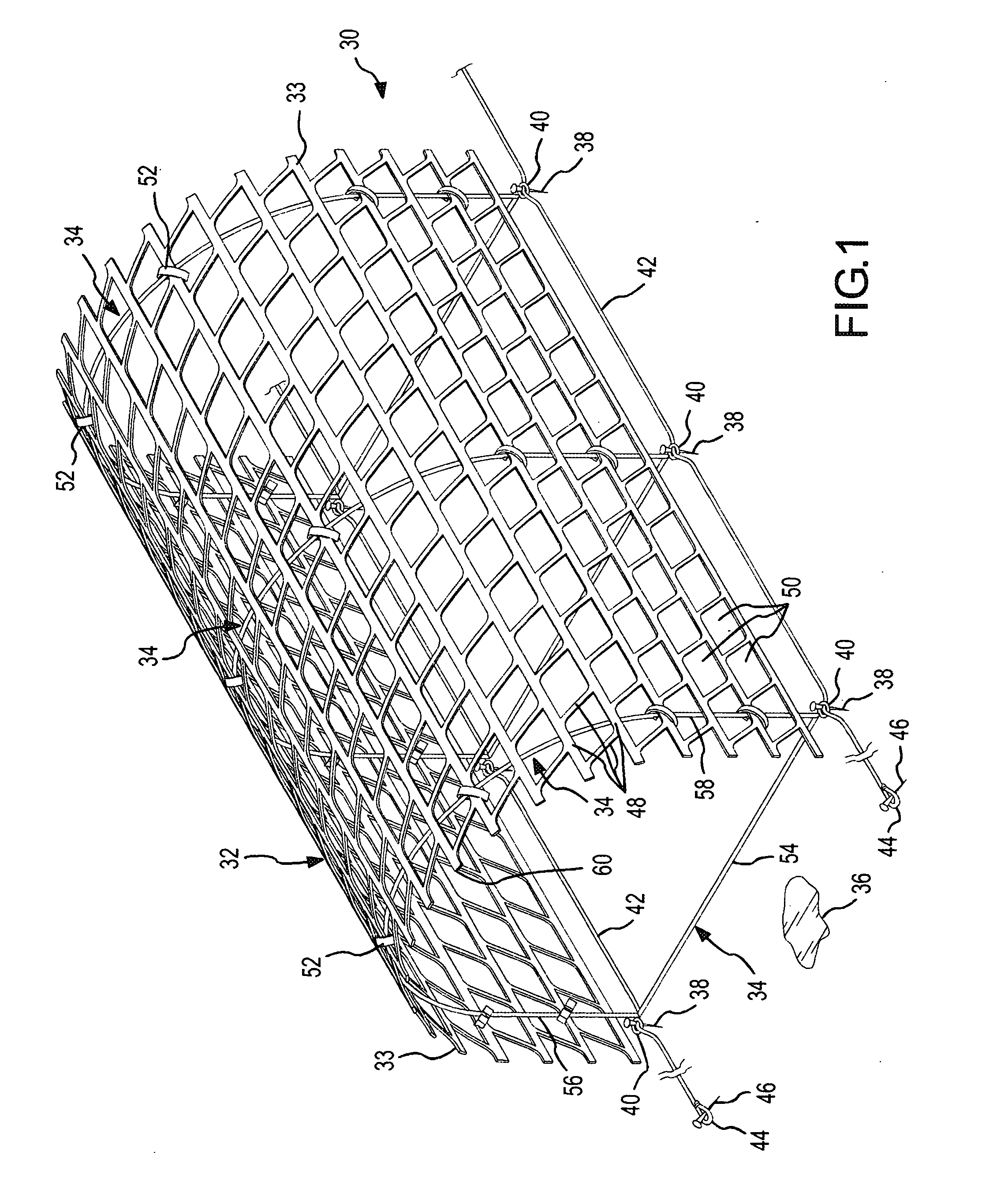Apparatus and method for efficiently fabricating, dismantling and storing a porous tubular windblown particle control device
a technology of windblown particle control and apparatus, which is applied in the direction of excavation, protective construction, construction, etc., can solve the problems of reducing visibility, icy roads, hazardous driving conditions, etc., and achieves the effects of reducing visibility, reducing labor intensity, and reducing labor intensity
- Summary
- Abstract
- Description
- Claims
- Application Information
AI Technical Summary
Benefits of technology
Problems solved by technology
Method used
Image
Examples
Embodiment Construction
[0036] One form of a porous tubular windblown particle control device 30 incorporating the present invention is shown in FIGS. 1-3. The control device 30 is generally formed by a sheet 32 of conventional, flexible, plastic netting material 33 which is connected to and supported by a support structure formed from a plurality of D-shaped frame structures 34 that are longitudinally spaced apart from one another in a series along the length of the netting sheet 32. The strength of the sheet 32 of netting material 33 and the D-shaped frame structures 34 establish and maintain the general overall three-dimensional tubular shape and configuration of the device 30.
[0037] The device 30 is secured in a desired position on the earth surface or ground 36 or other earth surface by an anchor system which includes frame spikes 38 that are inserted through anchor elements or loops 40 formed in the frame structures 34. The frame spikes 38 are driven through the anchor loops 40 and into the ground 3...
PUM
 Login to View More
Login to View More Abstract
Description
Claims
Application Information
 Login to View More
Login to View More - R&D
- Intellectual Property
- Life Sciences
- Materials
- Tech Scout
- Unparalleled Data Quality
- Higher Quality Content
- 60% Fewer Hallucinations
Browse by: Latest US Patents, China's latest patents, Technical Efficacy Thesaurus, Application Domain, Technology Topic, Popular Technical Reports.
© 2025 PatSnap. All rights reserved.Legal|Privacy policy|Modern Slavery Act Transparency Statement|Sitemap|About US| Contact US: help@patsnap.com



